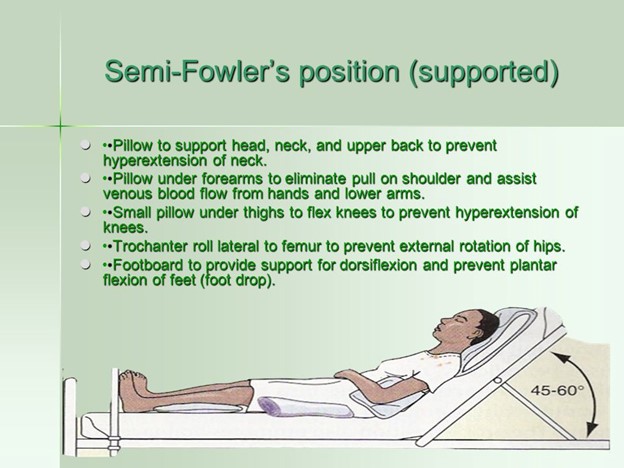A nurse is performing a neurovascular assessment on a client who has a fractured left femur. For which of the following findings should the nurse intervene immediately?
Left leg is warm to the touch.
Left pedal pulse strength is 2.
The client reports pain in the foot of the left leg.
Capillary refill in the left foot is 3 seconds.
The Correct Answer is D
Choice A rationale:
A warm left leg is a normal finding and does not require immediate intervention. Warmth indicates adequate circulation to the limb.
Choice B rationale:
A pedal pulse strength of 2 in the left leg indicates diminished pulse but does not require immediate intervention. The nurse should continue to monitor the pulse and report any significant changes to the healthcare provider.
Choice C rationale:
The client's report of pain in the foot of the left leg is an expected finding due to the fractured left femur. Pain is a subjective symptom, and the nurse should address the client's pain appropriately but not intervene immediately based on this finding.
Choice D rationale:
This is the correct choice. A capillary refill time of 3 seconds in the left foot suggests impaired circulation, which could be indicative of compartment syndrome or other circulation-related issues. The nurse should intervene immediately by notifying the healthcare provider to prevent further complications.
Nursing Test Bank
Naxlex Comprehensive Predictor Exams
Related Questions
Correct Answer is A
Explanation
Choice A rationale:

The nurse should maintain the client in a semi-Fowler's position to promote comfort and reduce the risk of complications related to appendicitis. This position helps to decrease pressure on the abdomen and may alleviate pain by reducing tension on the abdominal muscles.
Choice B rationale:
Administering an enema 1 hour prior to surgery is not indicated for a client with appendicitis. Enemas are generally not recommended for clients with suspected or confirmed appendicitis as they can potentially worsen inflammation and cause perforation of the inflamed appendix.
Choice C rationale:
Applying a warm pack to the client's lower abdomen is contraindicated in appendicitis. Heat can exacerbate inflammation and should be avoided in such cases.
Choice D rationale:
Placing the client on a clear liquid diet is not appropriate for appendicitis. Clients with appendicitis are typically NPO (nothing by mouth) to avoid stimulating the gastrointestinal tract and reduce the risk of rupture if surgery is needed.
Correct Answer is D
Explanation
Choice A rationale:
Allergy to eggs is not a contraindication for taking chondroitin with glucosamine. These supplements do not contain eggs and are generally safe for individuals with egg allergies.
Choice B rationale:
Hypotension is not directly related to the use of chondroitin with glucosamine. These supplements are not known to cause significant changes in blood pressure.
Choice C rationale:
History of hypoglycemia is not a specific concern with chondroitin and glucosamine supplements. These supplements do not significantly impact blood sugar levels in people without diabetes.
Choice D rationale:
The correct choice. The nurse should instruct the client to use chondroitin with glucosamine with caution if they are on anticoagulant therapy. Chondroitin and glucosamine may have mild anticoagulant effects, and when combined with prescribed anticoagulant medications, there is a potential risk of increased bleeding or altered blood clotting times. It is essential to monitor the client's coagulation parameters closely if they decide to use these supplements.
Whether you are a student looking to ace your exams or a practicing nurse seeking to enhance your expertise , our nursing education contents will empower you with the confidence and competence to make a difference in the lives of patients and become a respected leader in the healthcare field.
Visit Naxlex, invest in your future and unlock endless possibilities with our unparalleled nursing education contents today
Report Wrong Answer on the Current Question
Do you disagree with the answer? If yes, what is your expected answer? Explain.
Kindly be descriptive with the issue you are facing.
